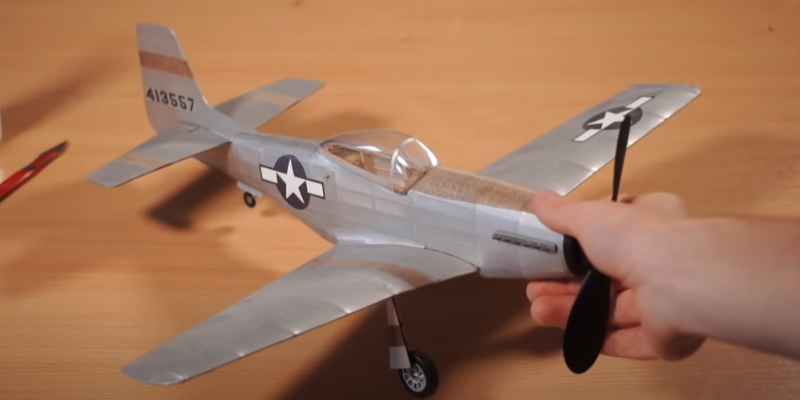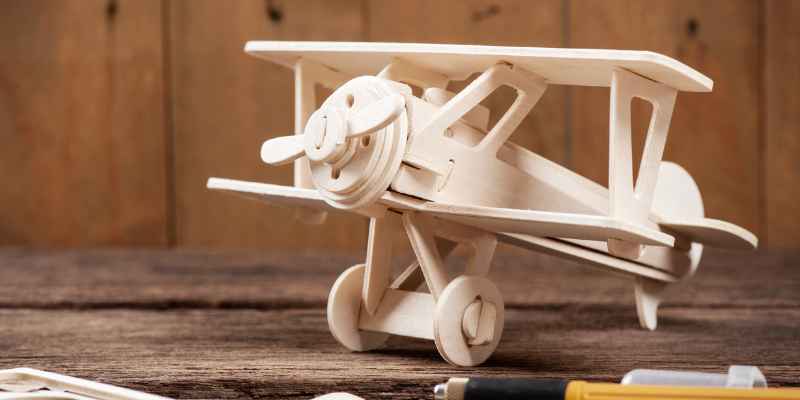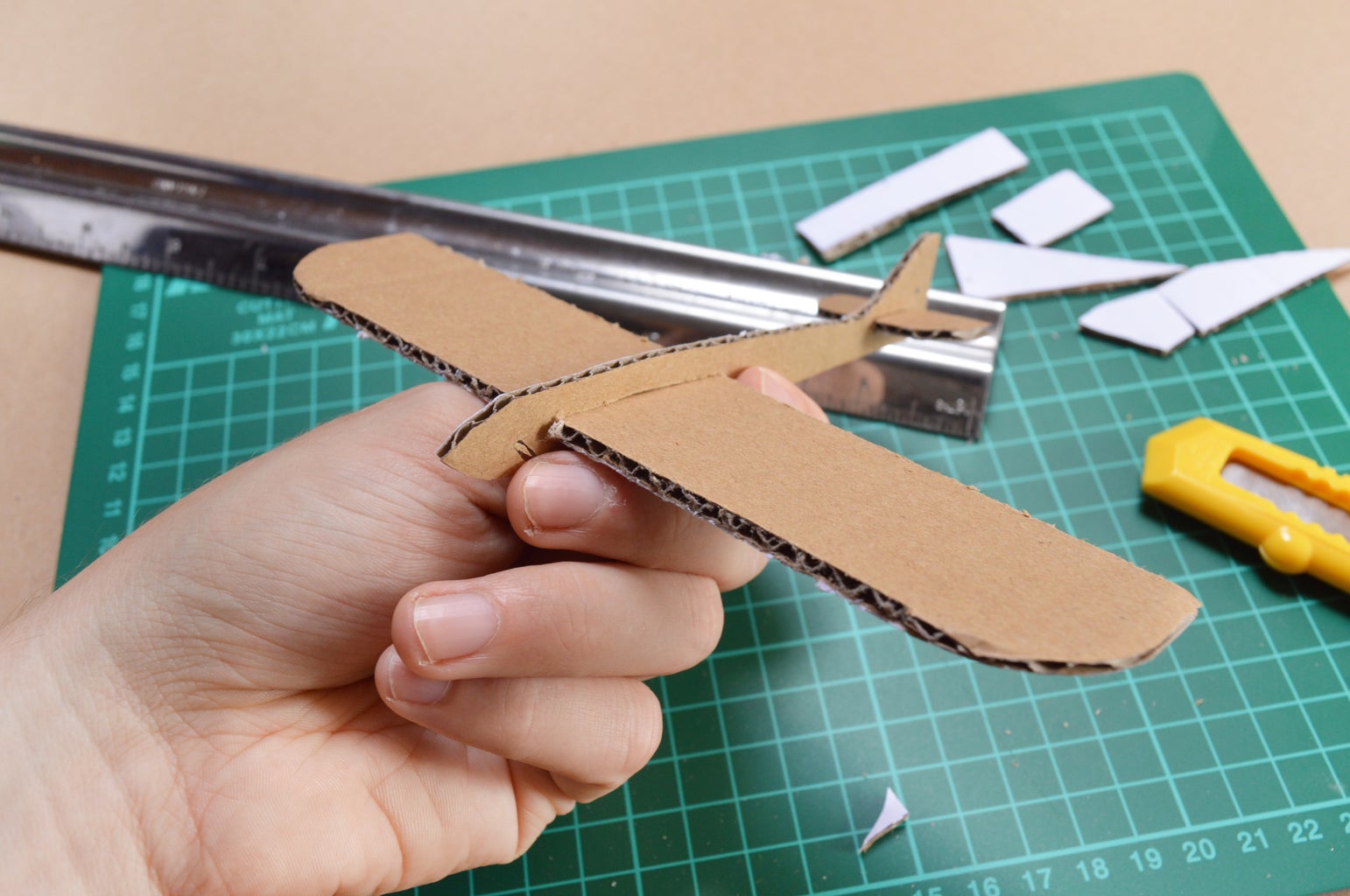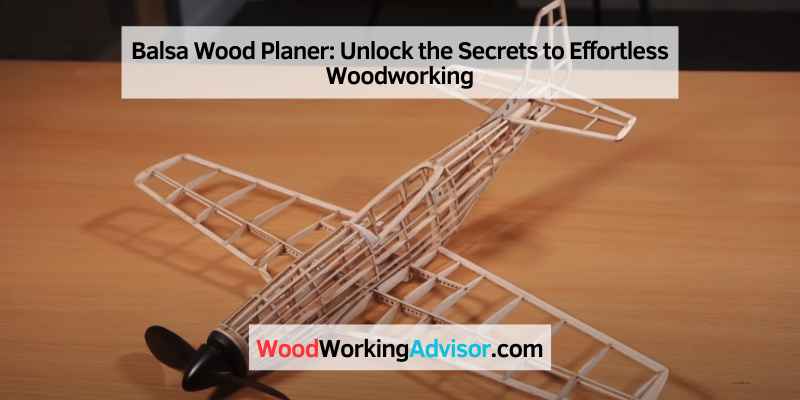A balsa wood planer is a tool used to shave and shape balsa wood. It smooths and contours the wood for model making or other projects.
Balsa wood planers come in various sizes and designs and are essential for achieving precise cuts and finishes on balsa wood. Balsa wood planers are essential tools for woodworking and model making. They offer precision and control for shaping and smoothing balsa wood, making them ideal for creating detailed and intricate designs.
Whether you’re a hobbyist, a professional woodworker, or a student working on projects, a balsa wood planer is a valuable addition to your toolbox. To effectively use a balsa wood planer, it’s important to understand its features and techniques for achieving the desired results. In this guide, we’ll explore the uses, benefits, and tips for using a balsa wood planer effectively in your projects.
The Versatility Of Balsa Wood
Balsa wood has gained popularity for its remarkable versatility, making it a sought-after material in various applications. Its lightweight and easily workable nature make it an ideal choice for a wide range of projects. In this blog, we will explore the exceptional versatility of balsa wood and why it is a preferred material for beginners and seasoned craftsmen alike.
Ideal For Beginners
Balsa wood’s soft and easy-to-cut properties make it an ideal material for beginners in woodworking and model building. Its forgiving nature allows newcomers to practice carving, shaping, and sanding without the frustrations commonly associated with tougher woods. The lightweight property of balsa wood offers a manageable and enjoyable crafting experience, making it a perfect introduction to woodworking for novices.
Common Applications
The versatility of balsa wood is evident in its diverse range of applications. From model airplanes and boats to architectural prototypes and crafting projects, balsa wood’s adaptability has made it a staple material in many industries. Its strength-to-weight ratio also makes it a popular choice in creating lightweight structural models and prototypes for design and engineering studies.

Understanding Balsa Wood Planers
Balsa Wood Planers are essential tools for achieving smooth surfaces and precise shaping in balsa wood projects. They come in various types and sizes to cater to different needs.
What Is A Balsa Wood Planer?
The Balsa Wood Planer is a handheld tool used to shave and smooth balsa wood, a lightweight and versatile material commonly used in craft, hobby, and model-making projects. The planer allows for controlled and precise removal of wood to create smooth surfaces.
Types Of Balsa Wood Planers
- Hand Planer: Manual tool requiring hand-operated control for shaping and smoothing.
- Electric Planer: Powered tool that offers efficiency and speed in wood planing tasks.
- Block Plane: Compact and versatile planer suitable for small-scale balsa wood projects.
- Bench Planer: Larger, stationary planer designed for more significant woodworking tasks.
Each type of balsa wood planer serves a specific purpose and caters to varying skill levels and project requirements. Choosing the right planer is crucial for achieving desired results in woodworking endeavors.
Choosing The Right Balsa Wood Planer
When it comes to working with balsa wood, having the right tools is crucial. One such tool is a balsa wood planer, which helps you shape and smooth the wood to perfection. However, with so many options available, choosing the right balsa wood planer can be a daunting task. To assist you in making an informed decision, consider the following factors:
Considerations For Selection
When selecting a balsa wood planer, keep the following factors in mind:
- Size and Weight: Consider the size and weight of the planer. Opt for a lightweight and compact option, as this will make it easier to maneuver and control while working on your balsa wood projects.
- Blade Sharpness: Check the sharpness of the blade. A sharp blade will ensure clean and precise cuts, reducing the risk of splintering or damaging the delicate balsa wood. Look for a planer with replaceable or sharpenable blades for long-term usability.
- Adjustability and Versatility: Look for a planer that offers adjustable cutting depth and angle settings. This allows you to customize the planing process according to your specific needs and ensures versatile usage on different types of balsa wood projects.
- Ergonomics and Grip: Consider the ergonomics and grip of the planer. Look for a model with a comfortable handle and an anti-slip grip. This will reduce hand fatigue and improve overall control during prolonged use.
- Dust Collection: Check if the planer has a built-in dust collection system. Balsa wood produces fine dust particles that can be harmful to your health if inhaled. A planer with a dust collection feature will help keep your workspace clean and protect you from potential health hazards.
- Price and Brand Reputation: Finally, consider the price and brand reputation. While it’s important to adhere to your budget, don’t compromise on quality. Look for reputable brands that offer durable and reliable planers, ensuring long-term satisfaction and optimal performance.
Maintenance Tips
To maximize the lifespan and performance of your balsa wood planer, follow these maintenance tips:
- Regular Cleaning: After each use, clean any sawdust or debris from the planer’s blades and body. This will prevent clogs and ensure smooth operation.
- Blade Sharpening: Check the sharpness of the blades regularly. Sharpen or replace them whenever necessary to maintain clean and precise cuts.
- Lubrication: Apply a few drops of lubricating oil to the moving parts of the planer to prevent rust and ensure smooth functioning.
- Storage: Store your planer in a dry and cool place, away from moisture and extreme temperatures. This will protect it from damage and extend its lifespan.
By considering these factors for selection and following the maintenance tips, you’ll be able to choose the right balsa wood planer and ensure its longevity and optimum performance.
Mastering Techniques With Balsa Wood Planers
When it comes to working with balsa wood, precision cutting is an essential technique that can make or break the quality of your project. With a balsa wood planer, you have the ability to create clean, precise cuts that result in smooth edges and a professional finish.
One key method for achieving precision cuts is to carefully measure and mark your desired dimensions before making any cuts. Using a ruler or a straightedge tool, you can create guide lines on the surface of the balsa wood, ensuring that your cuts are straight and accurate.
Once you have your guide lines in place, it’s time to take out your balsa wood planer. These handy tools are specifically designed to remove thin layers of wood, allowing you to shape and refine your project with ease. By applying steady pressure and making controlled strokes along your marked lines, you can achieve clean, precise cuts every time.
Creating Smooth Finishes
In addition to precision cutting, a balsa wood planer is also a valuable tool for creating smooth finishes on your projects. Whether you are building model airplanes, architectural prototypes, or crafting intricate designs, a smooth finish can greatly enhance the overall appearance and durability of your work.
After making your initial cuts with the planer, you may notice slight ridges or imperfections on the surface of the wood. This is where the planer truly shines. By gently gliding the planer over the wood, you can smooth out any rough spots and create a uniform surface that is ready for further detailing or finishing touches.
Remember to take your time and make small, gradual adjustments with the planer. This will help you avoid removing too much material or creating uneven surfaces. As you work, don’t forget to periodically check your progress by running your hand over the wood. This tactile feedback will allow you to ensure that the surface is truly smooth and free of any irregularities.
In conclusion, mastering techniques with a balsa wood planer opens up a world of possibilities for crafting high-quality projects. By honing your precision cutting skills and creating smooth finishes, you can elevate your woodworking skills to new heights. So grab your balsa wood planer and start perfecting your craft with confidence.
Advanced Woodworking Tips
In the realm of advanced woodworking, there are valuable tips and tricks to take your craft to the next level. Below are some expert insights into customizing designs and incorporating other materials with balsa wood planer.
Customizing Designs
- Experiment with unique shapes and patterns for a distinct look.
- Use stencils or templates to create precise and intricate designs.
- Consider layering different wood pieces for a multidimensional effect.
- Personalize your projects by adding engravings or designs with fine detailing.
Incorporating Other Materials
- Combine balsa wood with metal or acrylic for contrasting textures.
- Integrate fabric or paper elements to add a touch of softness to your creations.
- Explore the use of beads or gems for embellishments that stand out.
- Craft unique pieces by mixing balsa wood with natural elements like shells or stones.

Safety Measures And Best Practices
When it comes to working with a balsa wood planer, it is of utmost importance to prioritize safety. By following proper safety measures and best practices, you can ensure a safe and efficient woodworking experience. In this section, we will discuss the essential safety precautions you need to take and the best practices to implement in your workshop.
Protective Gear
Before you start using a balsa wood planer, make sure you have the necessary protective gear to keep yourself safe. The following items are essential:
- Safety goggles or glasses: Protect your eyes from wood shavings or any possible debris.
- Dust mask: Safeguard your respiratory system from inhaling sawdust particles.
- Ear protection: Prevent potential hearing damage by wearing earplugs or earmuffs.
- Gloves: Ensure a firm grip and protect your hands from accidental cuts or splinters.
Always wear these protective items while using a balsa wood planer. They may seem like small precautions, but they can make a significant difference in preventing injuries.
Workshop Setup
Having a properly set up workshop can greatly enhance safety and productivity. Consider the following factors when setting up your balsa wood planer workstation:
- Workbench stability: Ensure your workbench is stable and properly secured to prevent accidents while using the planer.
- Adequate lighting: Make sure your workspace is well-lit to enable clear visibility and avoid any mishaps.
- Clear workspace: Keep your work area clutter-free to minimize the chances of tripping or stumbling over objects.
- Power outlet placement: Position power outlets in easy-to-access locations to avoid tripping over cords or cables.
- Emergency exits: Familiarize yourself with the locations of emergency exits and ensure they remain unobstructed at all times.
- Fire safety: Keep a fire extinguisher nearby and know how to use it. Also, avoid using the balsa wood planer near flammable materials.
By paying attention to these workshop setup considerations, you can create a safe and efficient environment for your woodworking activities.
Troubleshooting Common Issues
When using a balsa wood planer, it’s common to encounter various issues that can affect the quality of your cuts. Understanding how to troubleshoot these common problems will help ensure a smooth and efficient woodworking experience. Let’s explore some of the most prevalent issues and how to address them.
Dealing With Uneven Cuts
If you find that your balsa wood planer is producing uneven cuts, it could be due to several factors. One of the most common reasons for this issue is an improperly adjusted blade. To rectify this, take time to readjust the blade to ensure it is level and sharp. Additionally, it’s essential to inspect the wood for any irregularities or knots that may be causing the uneven cuts. By carefully examining the wood and making necessary adjustments, you can achieve smoother and more consistent cuts.
Effective Tool Maintenance
Proper maintenance of your balsa wood planer is crucial for preventing common issues. Regularly cleaning the blade and keeping it sharp is essential for achieving precision cuts. Ensure that the blade is free from any debris or residue that may hinder its performance. Periodically lubricating the moving parts of the planer can also help in maintaining smooth operation. By incorporating effective maintenance practices, you can extend the lifespan of your balsa wood planer and improve its overall performance.

Credit: www.instructables.com
Exploring Creativity With Balsa Wood
Unleash your imagination with balsa wood to craft one-of-a-kind projects.
- Engage in hands-on activities to bring your ideas to life.
- Experiment with different shapes and sizes to create something truly unique.
Express your creativity through balsa wood to showcase your artistic vision.
- Detail your designs with precision to reveal your artistic flair.
- Excite others with your innovative creations made from balsa wood.
Frequently Asked Questions Of Balsa Wood Planer
What Is A Balsa Wood Planer Used For?
A balsa wood planer is a tool used for shaping and smoothing balsa wood surfaces, ideal for model-making and crafting detailed projects with precision.
How To Choose The Right Balsa Wood Planer?
Consider the blade sharpness, planer size, and ergonomic design when choosing a balsa wood planer for efficient and comfortable woodworking tasks.
Are There Different Types Of Balsa Wood Planers?
Yes, there are handheld balsa wood planers and electric planers, each suited for various woodworking needs and preferences, offering versatility and ease of use.
Conclusion
A balsa wood planer is a versatile tool for woodworking enthusiasts. With its precision and efficiency, it aids in creating smooth surfaces easily. Embrace the art of woodworking with this essential tool to enhance your crafting experience. Upgrade your woodworking arsenal with a balsa wood planer today.


